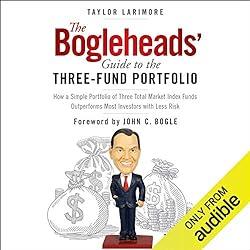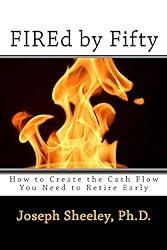
Photo by Collis on Pexels.com
" data-orig-size="1880,1255" sizes="(max-width: 1880px) 100vw, 1880px" data-image-title="man looking at a vintage car" data-orig-file="https://smallivy.files.wordpress.com/2023/11/pexels-photo-3056057.jpeg" data-image-description="" data-image-meta="{"aperture":"0","credit":"","camera":"","caption":"","created_timestamp":"0","copyright":"","focal_length":"0","iso":"0","shutter_speed":"0","title":"","orientation":"0"}" width="1880" data-medium-file="https://smallivy.files.wordpress.com/2023/11/pexels-photo-3056057.jpeg?w=300" data-permalink="https://smallivy.com/2023/11/19/thinking-about-buying-voo-maybe-think-again/pexels-photo-3056057/" alt="" height="1255" srcset="https://smallivy.files.wordpress.com/2023/11/pexels-photo-3056057.jpeg 1880w, https://smallivy.files.wordpress.com/2023/11/pexels-photo-3056057.jpeg?w=150&h;=100 150w, https://smallivy.files.wordpress.com/2023/11/pexels-photo-3056057.jpeg?w=300&h;=200 300w, https://smallivy.files.wordpress.com/2023/11/pexels-photo-3056057.jpeg?w=768&h;=513 768w, https://smallivy.files.wordpress.com/2023/11/pexels-photo-3056057.jpeg?w=1024&h;=684 1024w" class="wp-image-23645" data-large-file="https://smallivy.files.wordpress.com/2023/11/pexels-photo-3056057.jpeg?w=723" />Photo by Collis on Pexels.comInvesting often becomes a fad. There have been the Nifty Fifty, Dividend Reinvestment Plans (DRIPs), the dot.com boom, the meme stocks, and various other fads that have come and gone. Almost universally the fad ends and those who bought in late end up holding the bag.
The latest fad being promoted on Finance X/Twitter (FinTwit) and elsewhere is the Exchange Traded Fund (ETF) craze. In particular, the mega-cap craze. And the poster child for the mega-cap craze is the S&P500 index funds, in particular, the Vanguard S&P500 ETF, known affectionately on X (formerly Twitter) by its symbol, VOO.
Index fund buying (indexing) is a good thing. Buying ETFs, which are index funds with really low fees, is also a good thing. But following the crowd and cultishly buying VOO may be hazardous to your finances. Today we’ll go into what an index fund and an ETF are, what their advantages are, and then talk about why following the crowd into VOO might not be the best choice going forward.
(Note, this site contains affiliate links. As an Amazon Associate I earn from qualifying purchases. When you click on an affiliate link and buy something, The Small Investor will get a small commission for the referral. You are charged nothing extra for the purchase. This helps keep The Small Investor going and free. I don’t recommend any products I do not fully support. If you would like to help but don’t see anything you need, feel free to visit Amazon through this link and buy whatever you wish. The Small Investor will get a small commission when you do, again at no cost to you.)
Want to learn the secrets to investing and really turbocharge your returns? Check out the new book from The Small Investor, Investing to Win. This book presents 40 years of investing experience. Someone starting with zero knowledge of investing and the stock market could take this book and learn all that they needed to invest and do well. It would also be useful to someone who has invested and traded stocks for a while but who is really not getting the kind of returns desired.

Investing to Win
What are Index Funds and ETFs?
A mutual fund is where a group of investors pool their money together and hire a manager to invest the money for them. A fund will normally have an objective defining the investing philosophy and the types of asset it invests in. An objective may be to grow the portfolio value quickly, generate income, or even to maintain a relatively stable value. The mutual fund will also usually have some level of constraint on how the managers must invest funds.
An index is just a collection of stocks used as a gage of how the markets are doing. For example, it might be made up of the largest stocks, a set of stocks in a certain industry, or even bonds, real estate properties, etc…. The index will pretend to buy a certain amount of each stock, then track the value of the portfolio. Investors use the changes in the value of the index to determine how the market is performing and make decisions on buying and selling, or just evaluate how their portfolio is doing versus the market.
An index fund is a special kind of mutual fund where the fund invests to mimic the behavior of some index. It may actually buy the same shares as the real index, a subset of the shares, or buy some other set of assets that will track the index behavior. The objective for the fund manger is just to track the index, which is a lot easier than choosing stocks, so fees are normally a lot less with an index fund than for a fully managed mutual fund. An ETF is a kind of index fund that trades on a market like a stock rather than having investors send money directly into the fund manager as with a standard mutual fund.

Learn to be a better investor by reading J.D. Spooner’s Do You Want to Make Money or Would You Rather Fool Around? This book made me realize that I wasn’t buying enough shares in the companies I was investing in, meaning my wins were no where near as big as they should have been.
So, what is VOO?
VOO is the symbol for the Vanguard S&P 500 ETF. This is an ETF designed to track the Standard & Poor’s 500 index, which is an index containing most of the largest US companies. So, buying this fund gives the investor exposure to large US stocks.
This index is market-cap weighted, meaning the larger the company is, the larger the percentage of the index made up of that stock is. The largest company as of today is Microsoft Corp (MSFT), making up 7.38% of the index. Earlier this year it was Apple Computer, AAPL, making up 7.36% of the index right now. This means that if you put all of your money into VOO, about 15% would be split evenly between Microsoft and Apple.

This is my first book, which covers all of the details of how to invest and the risks involved in investing in different types of securities. This is the information you need to know before buying individual stocks or even mutual funds. Even more than that, it tells you what you should be doing at each stage of life to come out financially independent before you retire. Click on the book image above to learn more about it and read an exert on Amazon.
Why VOO may not be for you (right now)
VOO has done well over the last several years since we have been near the end of a long bull market where large stocks normally do well. At other times non-US stocks, small stocks, and even bonds will outperform the others. Each segments gets its time in the sun and it is difficult to predict which one will be on top during any given year.
Still, the longer one segment has done well, the higher the relative cost of the assets in that segment become, making it less likely that they will continue to outperform the others. While a roulette wheel won’t know how many red or black numbers have been spun in a row, each year when a segment of the market outperforms the others it become less likely that it will outperform the next year.

Want diversification without a lot of work? Check out The Bogleheads’ Guide to the Three Fund Portfolio. Learn to build a diversified portfolio of index funds with just three funds.
And VOO has become a favorite of many X finance tweeters, meaning there has been a lot of hype around the ETF. As more people buy, the price of the ETF goes up. This makes even more people buy since they see the ETF outperforming others and it becomes a positive feedback loop. But eventually you run out of people to invest and it all comes crashing down. This is how bubbles work.
Alternatives to VOO
Does this mean you shouldn’t have VOO in your portfolio? No. But you should have a lot of different ETFs and assets. Not just VOO.
There are also a lot of different US large-cap ETFs. QQQ (“the Q’s”) is a NASDAQ following ETF. DIA (“diamonds”) follows the Dow Jones Industrial Index. There is also SPDRs (“SPiDeRs”) that also follow the S&P 500. Mixing one of these with VOO will help diversify your portfolio in large cap US stocks, but you’ll also be buying into many of the same companies since they overlap quite a bit.
It would be better to instead diversify out into totally different segments of the markets by buying a ETF that invests in a different segment of the markets. VB buys small cap stocks, as would any ETF that tracks the Russell 2000 index. Another possibility would be VO, which buys mid-cap stocks, those between small and large.
Real-estate can be easily acquired through REITs (Real-Estate Investment Trusts) and REIT funds. VNO invests in office properties. EXR (Extra Space Storage) invests in storage lockers. American Tower (AMT) invests in cell phone towers. You can also buy a fund of REITs such as FSREX from Fidelity or VNQ from Vanguard.
Before you can start investing, you need money to invest. Please check out my latest book, FIREd by Fifty: How to Create the Cash Flow You Need to Retire Early

Rebalancing keeps you from being left holding the bag
Diversifying will help right now, but over time you can still see your portfolio get dominated by the market segments that do well. How do you keep from getting too much invested in one area and being left holding the bag when that sector goes from most to least popular? The answer is rebalancing.
Here’s how it works: Have a target allocation for each segment of the market (for example target allocations for different investing goals, see Sample Mutual Fund Portfolios). For example, you could have a target of 40% large caps. 40% small caps, and 20% real-estate. Once or twice a year, sell some shares of the ETFs that have done well and are above your targets, then reinvest the money into those that have done poorly and therefore are below your targets. In doing so, you’ll be locking in gains in the areas that have done well and putting more money into the areas that are at a discount. Sell high, buy low.

If you invest using mutual funds/ETFs and are looking for ways to choose types of funds, check out my new mini-book, Sample Mutual Fund Portfolios. It goes through fund allocations for different types of accounts, from 401ks and IRAs to college accounts, saving up for things and accounts for spending during your retirement years or other times where you’re using money from a portfolio to fund your lifestyle.
You don’t want to rebalance too often because once an area of the markets becomes hot, it often continues to be hot for some time. Rebalancing once or twice a year is plenty and will increase your returns over time. Your brokerage or 401k plan may even have tools to automatically rebalance your portfolio for you so that you won’t need to remember. Otherwise, pick a day like your birthday, right after the start of the new year, Halloween, or some other day that you’ll remember.
The wealthiest people read a lot of non-fiction books. Don’t have time to read books because of your long commute? Listen to your books in stead with Audible. Free trial at the link below.

Have a burning investing question you’d like answered? Please send to [email protected] or leave in a comment.
Follow on X to get news about new articles. @SmalllIvy
Disclaimer: This blog is not meant to give financial planning or tax advice. It gives general information on investment strategy, picking stocks, and generally managing money to build wealth. It is not a solicitation to buy or sell stocks or any security. Financial planning advice should be sought from a certified financial planner, which the author is not. Tax advice should be sought from a CPA. All investments involve risk and the reader as urged to consider risks carefully and seek the advice of experts if needed before investing.
